MY VISION
For my upcycle project I want to take an old pair of jeans that I do not wear anymore and use various fabrics to create a patchwork style article of clothing. I have a little prior knowledge with sewing and using a sewing machine and I also want to incorporate other fabrication techniques in my project.
AESTHETIC
For my project I used a combination of the Cottagecore aesthetic and Nature aesthetic (Naturecore). Cottagecore and Naturecore aesthetics celebrate simplicity and a connection to nature. Cottagecore cherishes rural life, with its cozy cottages, gardens, and traditional crafts. Naturecore focuses on nature itself, highlighting forests, wildlife, and outdoor experiences. I chose this aesthetic because I enjoy nature and the earthy tones that are inline with nature. Cottagecore gives very calming and simple aspects in life and is visually appealing for me. I want to incorporate these elements into my upcycle design and promote sustainability. This aesthetic can create a combination of rustic charm and natural beauty by repurposing scraps of fabric to create a cozy, quilt-like design on jeans. Upcycling clothing can create a unique expression of sustainable fashion that celebrates the beauty of nature while embracing the art of handmade craftsmanship. [1]
INSPIRATION
I was inspired by many different products and images that I found on Pinterest. I was looking at two different fabrication techniques but decided to incorporate both in my final piece. The first element is adding patchwork to the jeans itself. I was inspired by various styles of patchwork but I ultimately chose a more unique approach to the type of patches I created. Instead of using a more traditional style of patches, like squares and rectangles, I cut an indie inspired flower pattern. The second element that I was inspired to incorporate is crochet. I used to crochet many different items like clothes and tote bags. In some of the inspiration photos I was inspired to incorporate crochet patterns into the jeans. I wanted to combine some prior knowledge with sewing and a hobby of mine into upcycling an old piece of clothing into something new. [2][3][4][5]
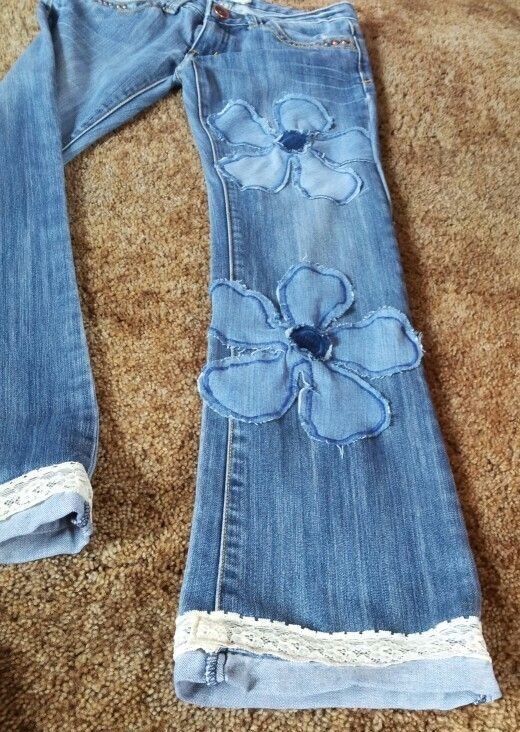

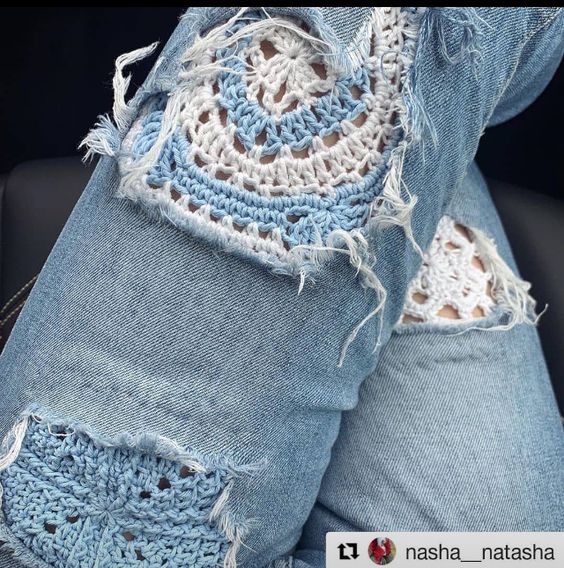

MATERIAL SOURCING
In order to fabricate my design I needed to obtain the required materials. For this project I used a pair of jeans I already have, yarn and a crochet hook, and scrap fabric in earthy tones. I also used the sewing machines in the BTU Lab in Atlas as well as my own needle and thread to hand sew some elements.
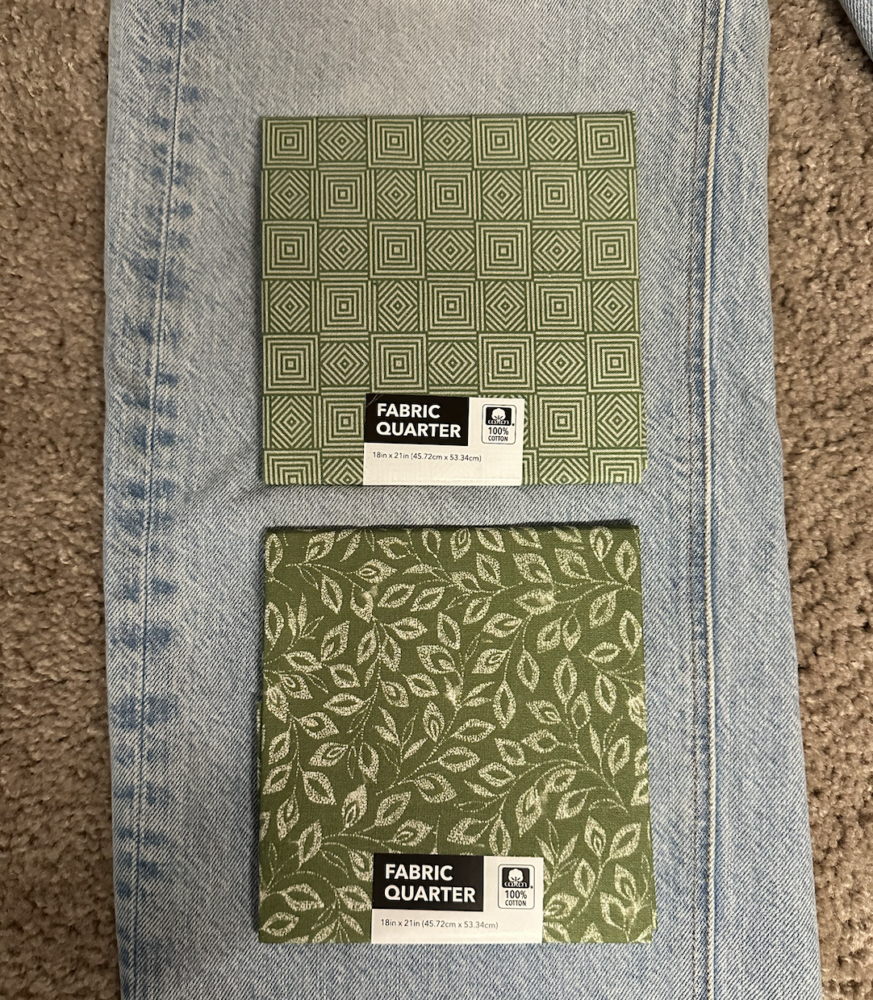
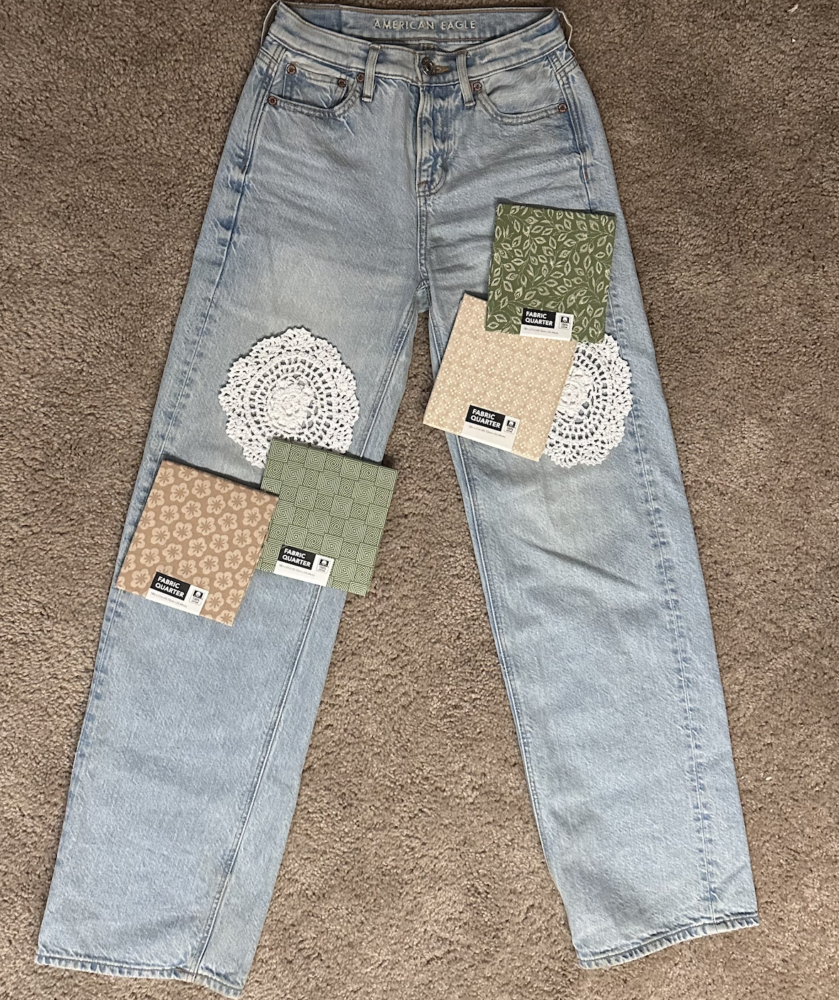
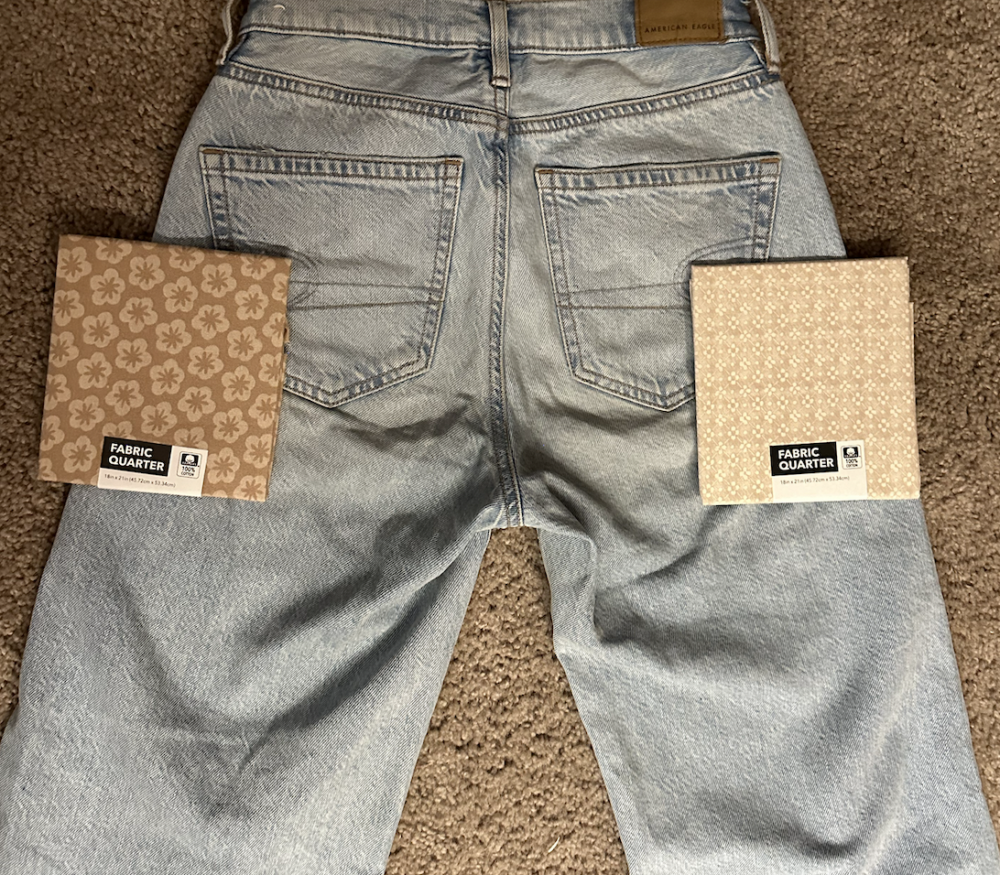
FABRICATION PROCESS
I first sketched out placements of the design of the jeans on my iPad and played with various types of elements. In my initial sketches I was messing around with the type of patches I wanted to use and the placement of everything. After the first stage of drafting I was not satisfied with the outcome. I felt like the contrast between traditional patches in comparison to the larger flowers did not complement each other and did not fit my desired aesthetic. After looking for different inspiration I landed on the other style of flower patches. I then worked to sketch the majority of the patches in this style and I felt like this fit my goal better.
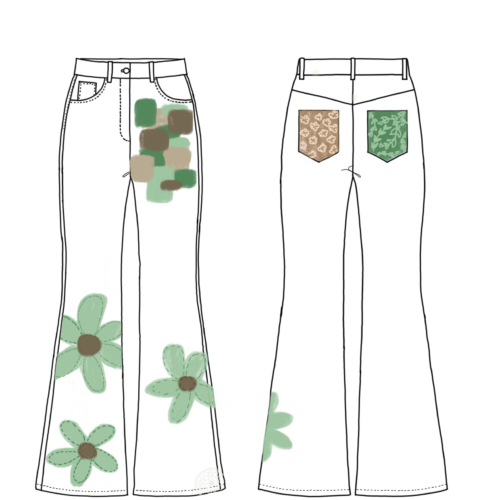
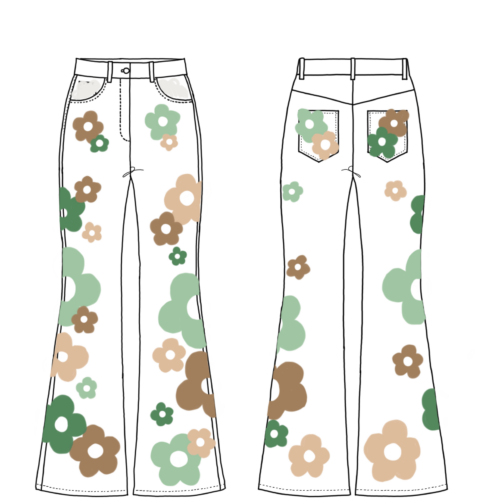
After completing my final sketch, I started by cutting out the patches from my fabric. I used a Cricut to create a stencil of the flower design in 4 varying sizes. By tracing the design on the fabric and then cutting out the shape with fabric scissors, I was able to individually create the patches the way I personally wanted. Following this I started experimenting with placements and arrangements of the 4 varying patterned fabrics. My overall objective was to focus the patches towards the side and bottom of the pant legs. This gave a more scattered and diffused look.
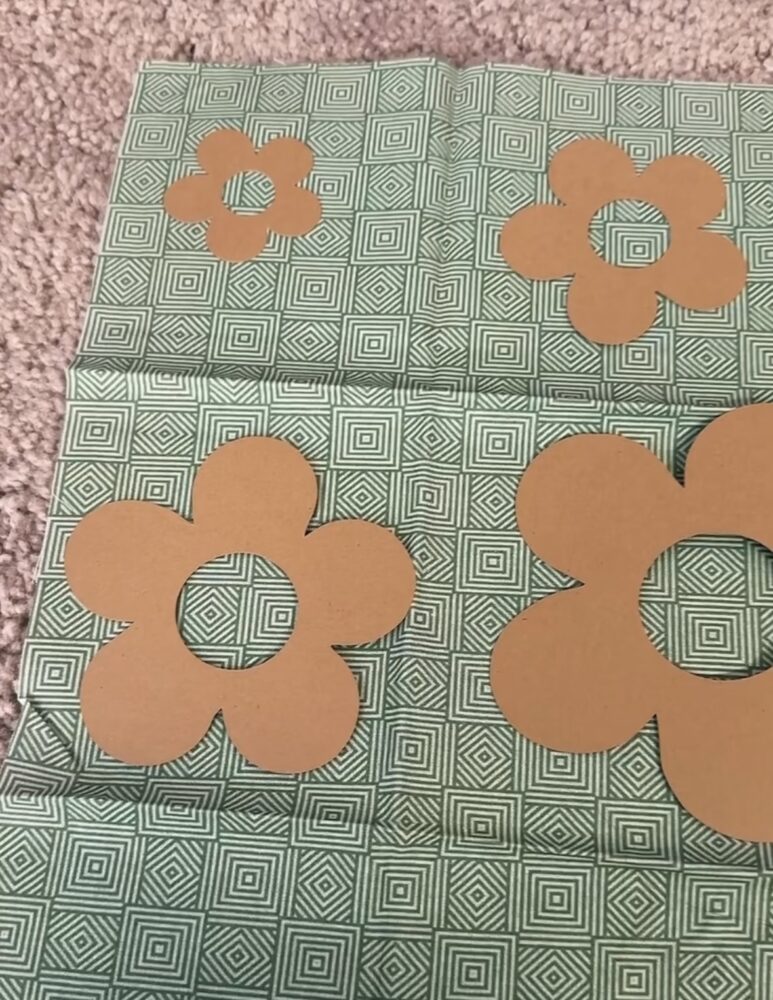
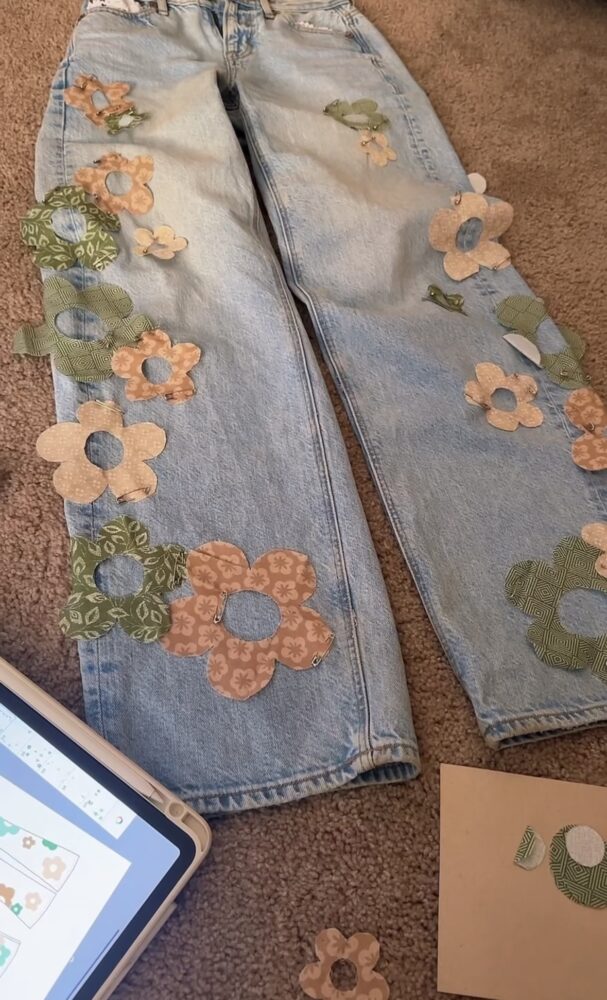
To address the most difficult of this component, I had to scrunch the fabric around the sewing machine in order to not sew through both sides of the fabric. Since I wanted to make these wearable, I had to work each curved patch along with either the front or back layer of the jean fabric. Since sewing machines don’t give you much flexibility with a 360 degree rotation, I struggled to sew all of the patches with only a sewing machine. I was only able to sew about the calf area and down. With this obstacle that I faced, I had to hand sew the rest of the patches. While this is something that you can’t necessarily notice looking at the final piece, I think hand sewing gave me cleaner lines and allowed me to have more control over the amount of stitching between the edges of the patches. A negative to hand sewing on the other hand is this method is more time consuming.
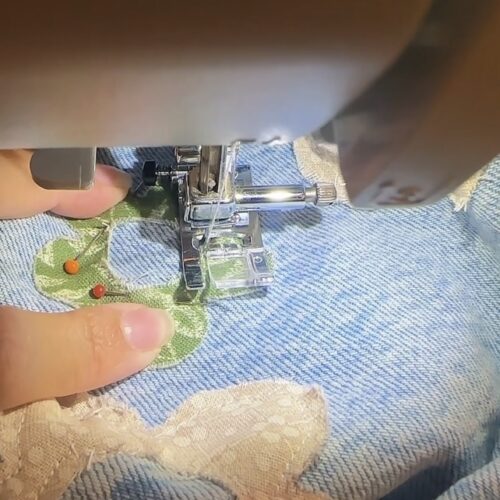
After finishing sewing all of the flower patches, I then proceeded to add the crochet elements and different patches. I played around with the placement for the crochet pieces but I decided on adding the crochet element to one of the inside front pockets and one adjacent back pocket. I then covered the opposite front/back pockets with excess fabric. These elements I hand sewed but I think it help my overall piece fit the Cottagecore aesthetic.
FINAL PRODUCT
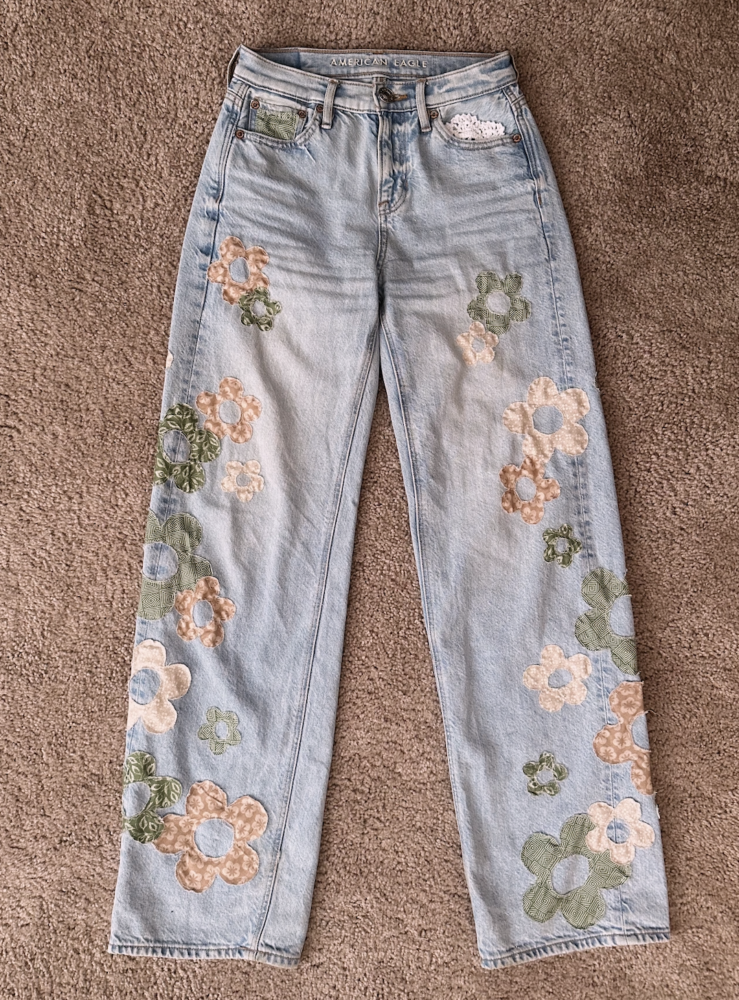
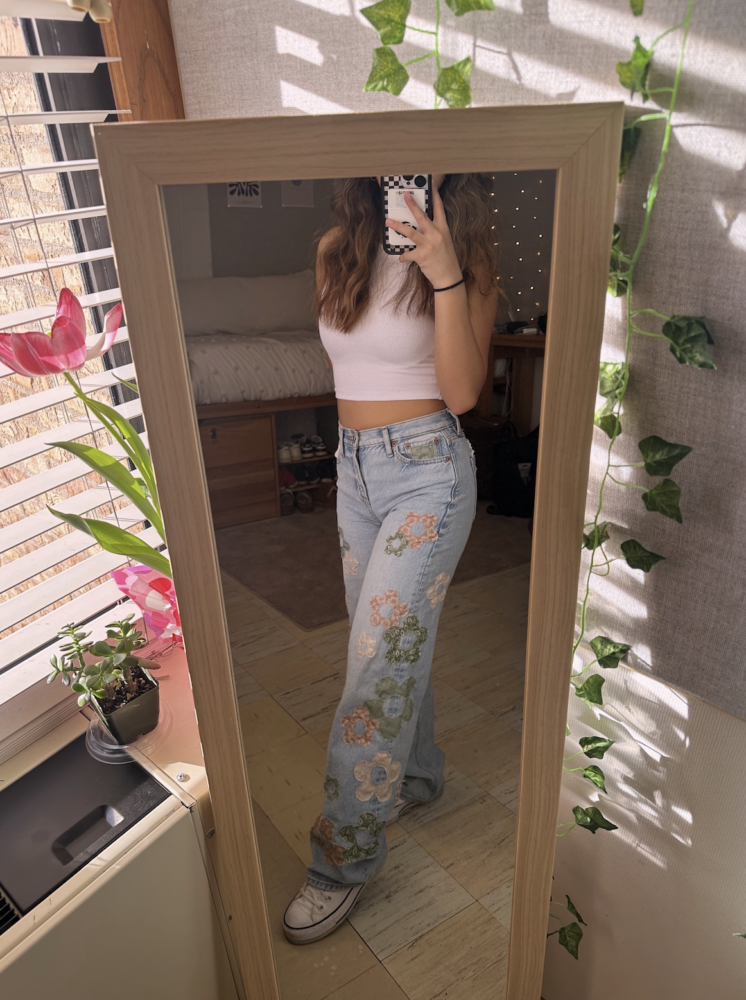
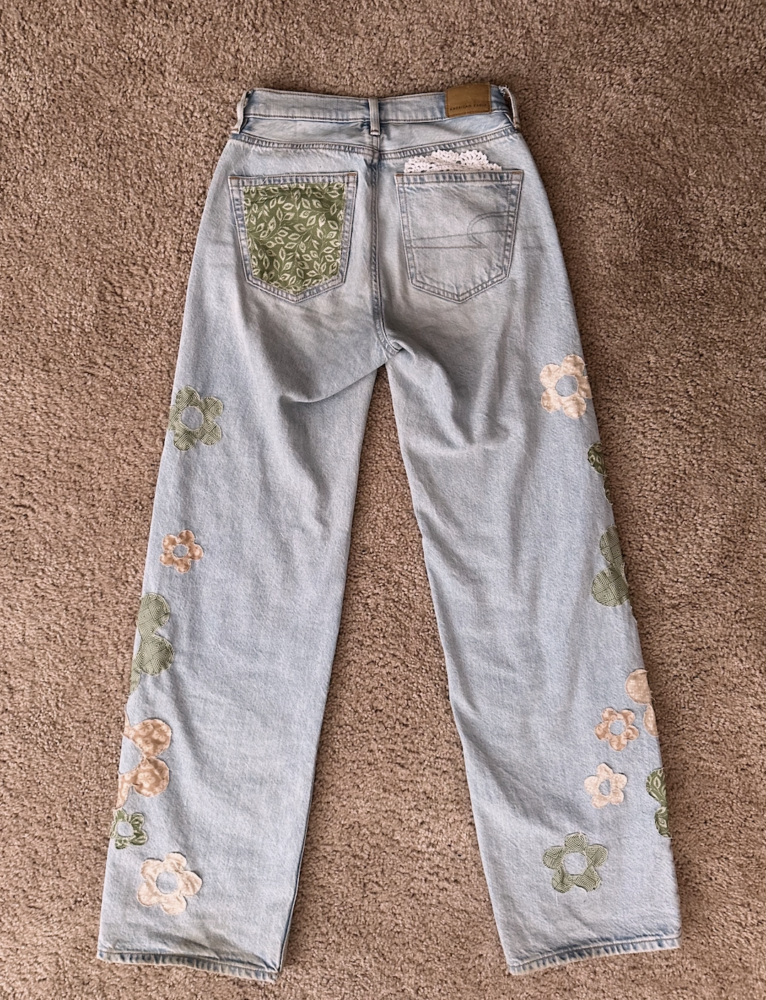
The decision made for the style of patch and the placement was key in enhancing the overall look and vibe of the project. Despite the small sewing alterations, the final piece came out successfully.
NEXT STEPS / IMPROVEMENTS
I plan to use this article of clothing in the future. I think it is very wearable and still fits my style. This project gave me lots of inspiration to take pieces of clothing that I no longer wear or that doesnt fit my current style, and make something completely new. I am overall satisfied with my final product but if I had more time and were to do it again I would consider adding more crochet elements to really satisfy the Cottagecore aesthetic. Some inspiration pictures from my moodboard that originally inspired me to incorporate crochet was a pair of jeans that had solely crochet design for the cuffs of the jeans. I think adding a larger portion of crochet within the actual pants would be a fitting decision. Nevertheless, with the time given, I am happy with the outcome and what I was ultimately able to create and reuse.
SOURCES
[1] Wiki, Contributors to Aesthetics. “Naturecore.” Aesthetics Wiki, Fandom, Inc., aesthetics.fandom.com/wiki/Naturecore. Accessed 31 Jan. 2024.
[2] “♥ . . . Agirlsblush ୨୧: Upcycle Clothes, Refashion Clothes, Upcycled Fashion.” Pinterest, 29 Jan. 2024, www.pinterest.com/pin/417920040440877730/.
[3]“‘Chic and Green: Women’s Recycled Fashion Inspiration’: Jeans DIY, Patched Jeans DIY, Upcycle Clothes.” Pinterest, 15 Feb. 2024, www.pinterest.com/pin/417920040441041008/.
[4] “Granny Square Jean Patch: DIY Ripped Jeans, Patched Jeans Diy, Crochet Poncho Free Pattern.” Pinterest, 29 Jan. 2024, www.pinterest.com/pin/417920040440877757/.
[5]“Hayley Fine (Hayleyfinee) – Profile: Pinterest: Embroidery, Denim Crafts, DIY Clothes.” Pinterest, 29 Jan. 2024, www.pinterest.com/pin/417920040440877726/.

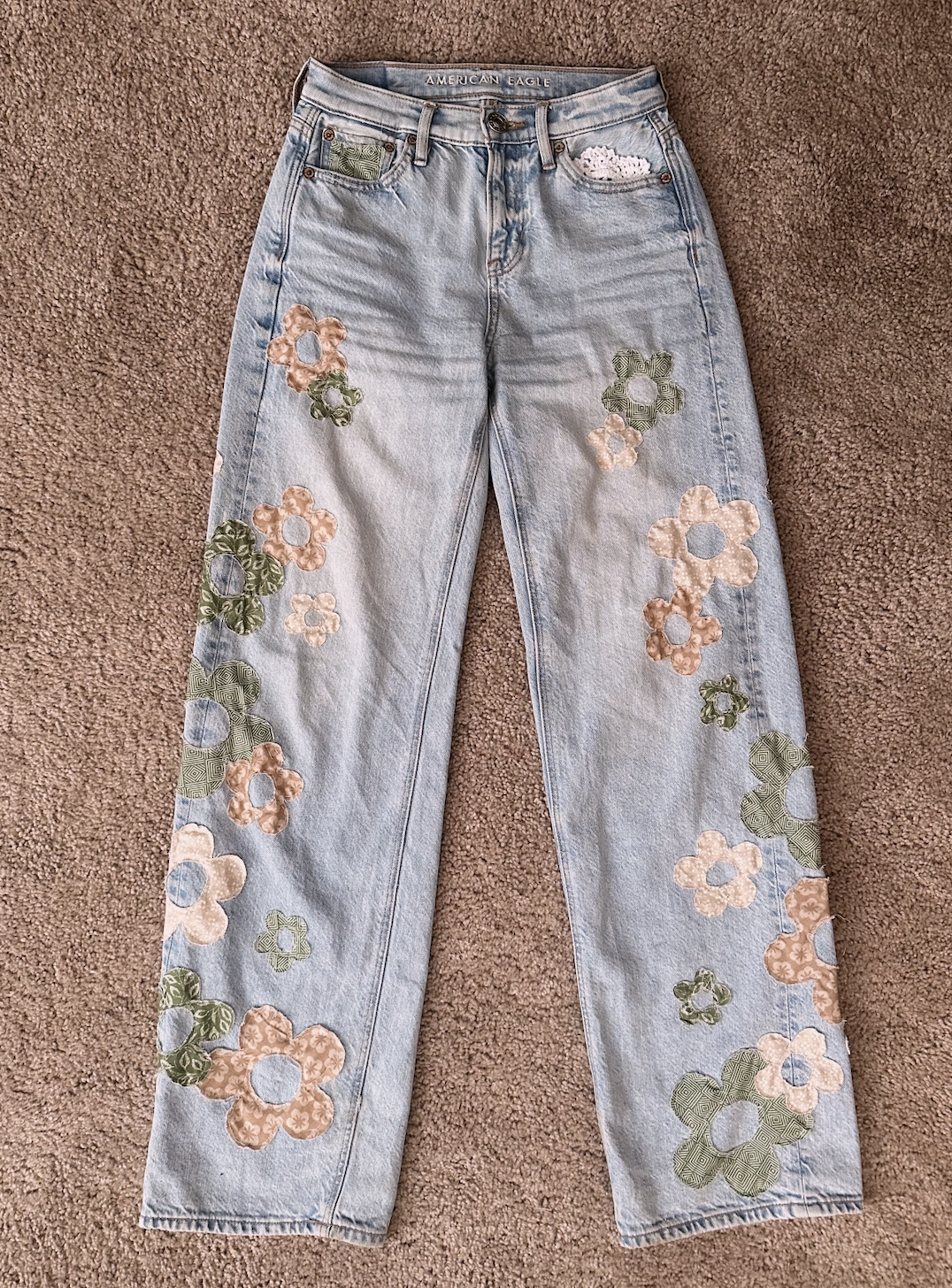
4 Comments. Leave new
[…] Upcycle Design Report […]
Not only are these so adorable but I loved following your process through this post. I appreciate that you fulfilled the cottage core aesthetic with colors and shapes of your patches. Great work!
Hey, Emilee. Awesome job with your upcycling project. I think it came out super cute. The way you arranged the various patches of flowers down the leg looks balanced and the fabric’s colors and patterns were true to the cottage core aesthetic. I also had to sew for my project, so I am wondering if you took any additional steps in preventing the edges of the flowers from fraying over time.
Hi Helen,
Thank you so much for your feedback! I had a great time doing this project and I am happy with the results. I actually left the fraying on the patches because I thought it fit the natural sense of my aesthetic. I intentionally left about a centimeter of hem to allow my fabric to fray. I would say that if I were to go with a more cleaner look without fraying, I would either find a fabric that doesn’t intentionally fray or fold each hem and sew.